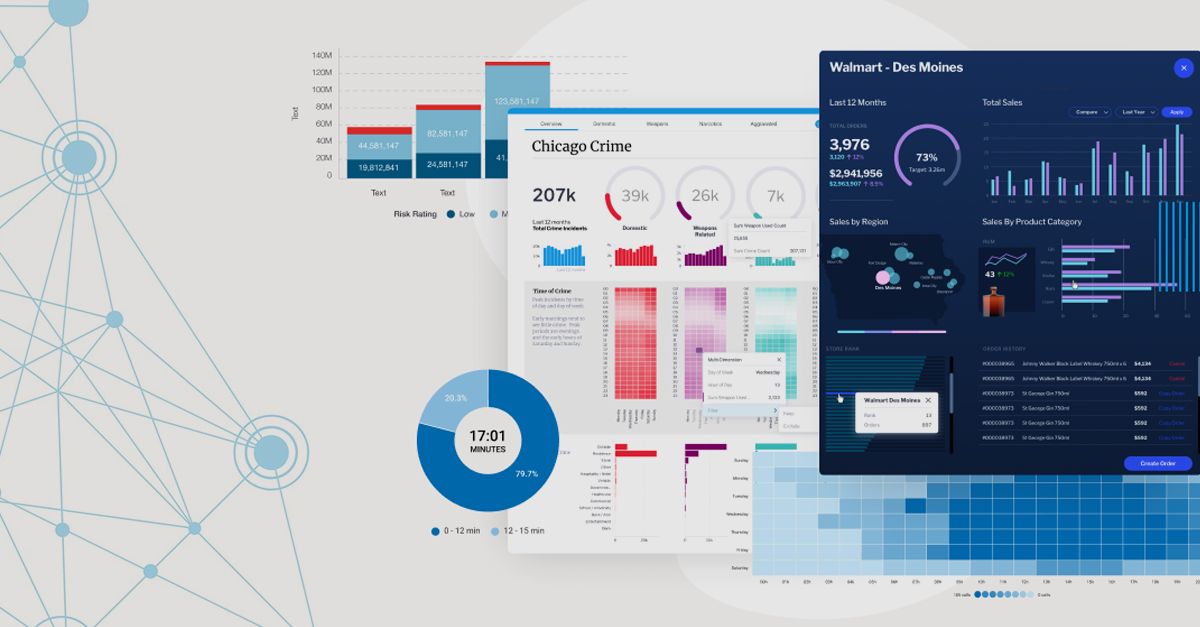
What happens when two superpowers come together?
They create magical thunderstorms! And the thunderstorms create a whirlpool of changes for products and services.
For example, when machines started learning and data became intelligent, customer service became so much easier. The marketing people knew when to sell, what to sell, and to whom to sell!
Similarly, in today’s data-driven business landscape, organizations are increasingly realizing the importance of leveraging the power of the cloud for their analytics and business intelligence needs.
Power BI, Microsoft’s robust business analytics tool, has emerged as a leader in this domain, enabling seamless integration with Microsoft Azure and other cloud platforms. This integration empowers businesses to store, analyze, and visualize vast amounts of data, leading to faster insights, improved decision-making, and enhanced scalability.
In this blog, we will explore the journey from on-premises to the cloud, highlighting the benefits and steps involved in leveraging Power BI’s integration with Microsoft Azure.
The Power of the Cloud for Data Analytics
Have you heard about the cloud revolution?
Yes, that is genuinely a term and a revolutionizing one!
The shift of businesses to cloud servers for more efficient, cost-effective, and agile solutions is known as the cloud revolution.
The cloud revolution has transformed the way organizations handle data. With traditional on-premises solutions, businesses faced limitations such as
So when data is stored on the cloud and integrated with a powerful data analysis tool, you can only think about the power of data!
All we are saying is that the integration of Power BI with Microsoft Azure provides a compelling solution.
Azure offers a robust, secure, and scalable cloud infrastructure, while Power BI provides intuitive data visualization and reporting capabilities. Together, they unlock the full potential of data analytics.
So let us see in detail the benefits of this powerful combination!
Benefits of Power BI’s Integration with Microsoft Azure
Power BI’s integration with Microsoft Azure brings several key benefits to organizations.
So what are the steps to avail of the above benefits?
Here they are!
Step-by-Step Guide to Power BI and Azure Integration
Let’s delve into the step-by-step process of integrating Power BI with Microsoft Azure:
Setting up Azure Infrastructure
To begin, create an Azure account and set up the necessary infrastructure. This involves creating storage accounts, data warehouses, and virtual machines based on your organization’s requirements.
Data Ingestion and Preparation
Next, prepare your data for analysis. Azure provides various services like Azure Data Factory and Azure Databricks to extract, transform, and load (ETL) data into Azure storage or data warehouses.
Data Modeling and Transformation
Once the data is in Azure, it’s time to model and transform it to suit your analytics needs. Azure Analysis Services and Azure Data Lake Analytics offer powerful tools for data modeling, while Azure Data Factory and Azure Data Lake Store enable efficient data transformation.
Creating Power BI Reports and Dashboards
With your data prepared and modeled in Azure, it’s time to connect Power BI to Azure data sources. Power BI Desktop provides seamless connectivity to Azure services, allowing you to build visually appealing reports and interactive dashboards.
Sharing and Collaboration
After creating your reports and dashboards, share them with stakeholders across your organization using Power BI’s sharing capabilities. Azure Active Directory integration allows you to manage user access and permissions easily.
Monitoring and Optimization
Continuously monitor the performance of your Power BI dashboards and Azure infrastructure. Utilize Azure Monitor and Power BI’s usage analytics to identify bottlenecks, optimize queries, and ensure optimal system performance.
It may not be simple, but it is not difficult too. With the correct consultants, Power BI’s Integration with Microsoft Azure will be easy for you.
Conclusion
Power BI’s integration with Microsoft Azure offers organizations a powerful solution to migrate from on-premises data analytics to the cloud. By leveraging Azure’s scalability, cost efficiencies, and security, businesses can harness the full potential of Power BI, enabling faster insights, better decision-making, and improved collaboration.
In this blog, we explored the journey from on-premises to the cloud, highlighting the benefits and steps of integrating Power BI with Microsoft Azure. By following this guide and help from the experts, businesses can unlock the true potential of their data and gain a competitive edge in the digital era.



